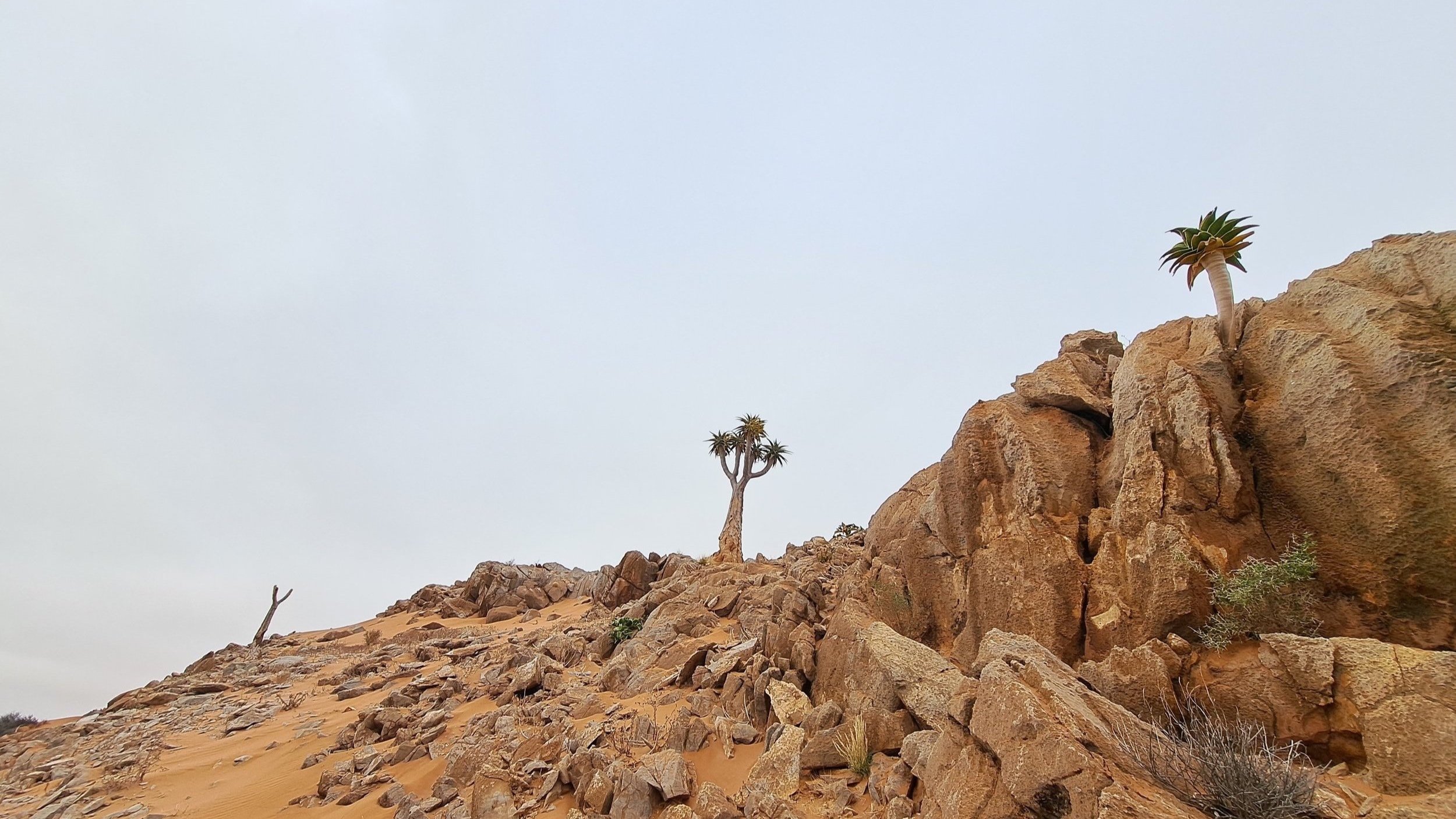
Chapter 1
DUST BOWL
The recent years-long drought may have tipped parts of the Northern Cape towards an irreversible dust bowl, following decades of heavy grazing and mining.
Dust Bowl investigates the spreading dust bowl conditions that are sweeping across parts of Namaqualand, on the edge of region’s western desert: the causes; the consequences to conservation and livelihoods; and who holds the power to make the region’s development decisions. Plant poaching also emerges as a grave new threat to the region’s rare succulent diversity.
28 January 2025
Dust Bowl [1]: Here come the dunes
As Earth’s average temperature slips beyond 1.5°C of average warming and threatens to lurch the climate outside of its safe zone, a visit to the Richtersveld shows what happens locally when a region crosses a tipping point, threatening conservation and livelihoods.
First published in the Daily Maverick.
28 January 2025
Dust Bowl [2]: Farmers fight back against reckless mining practices
Farmers are holding the line against a surge in new mining prospectors, but are overwhelmed by the volume, and are challenging the state’s ability to manage the region’s development as the climate emergency escalates.
First published in the Daily Maverick.
29 January 2025
Dust Bowl [3]: Drought-battered Richtersveld farmers fear destructive creep of mining
Farming remains the most viable livelihood. But as the region’s climate tips towards hotter, drier conditions, Karoo researchers fear this sparsely-populated region will become a sacrifice zone for the rest of the country’s development, and that only a powerful few will benefit.
First published in the Daily Maverick.
20 March 2025
Bleak future for Karoo succulents as desert expands in South Africa
Recent population surveys show continued decline in two desert-adapted succulent tree aloe species, with conservationists fearing for the state of an understudied third species. A years-long drought has accelerated spreading dust-bowl conditions following decades of mining and heavy grazing, with grave consequences for endemic succulents.
First published in Mongabay.
15 February 2025
Photo Essay: Tending the dead
The maiden’s quiver tree is the Cinderella of three tree aloe sister species that grace the Richtersveld’s gravelly moonscape. Maybe it’s outshone by the towering charisma of the giant and common quiver trees— it’s stocky and stout — and this may be why its population trends haven’t been studied as closely as the other two.
But its future is as uncertain as its siblings’, with the desert’s climate ratcheting up from hellishly hot to unbearable.
28 March 2025
Photo Essay: Wind-blown sand scouring life off a Southern African landscape
A nasty wind rips across Cornell’s Kop one afternoon in the spring of 2024, driving emeritus professor Timm Hoffman and his team to abandon the hilly study site a few clicks west of the |Ai-|Ais Richtersveld Transfrontier Park that straddles the South Africa-Namibia border along the Orange River.
Coming soon in Mongabay.
20 December 2024
Poachers target South Africa’s ‘miracle’ plant with near impunity
A year ago, single plants of a rare South African lily were fetching eye-watering prices at auctions in China. Since then, poaching syndicates have tracked the wild population to its place of endemism in a single gorge in the south-west of the country. Northern Cape conservation authorities are ill equipped to protect it.
First published in Mongabay.
More wordsmithery…
Scorched: South Africa’s changing climate is a vivid journey through southern Africa’s mesmerising landscapes as climate change sets in. It wanders through the KwaZulu-Natal Midlands to capture the last faltering calls of a rain frog that was named after the hobbit Bilbo Baggins. The author pauses for thought following an elephant stampede to consider how savannahs might shift in an altered climate. She trails the wading birds of the West Coast into the high Arctic tundra for their annual breeding season before returning to a Cape which is crisping over as drought continues to grip the province.
Another world exists somewhere beyond the global politicking of superpowers and petrostates. This is the place where a solitary bee continues to pollinate the pale, demure flower of an orchid near Darling, or where the limey coral skeleton hosts its colourful algae on a Sodwana reef. These plants and animals — many of which are unique to the region — continue to do what their ancestors have done for millions of years.
Yet the world is shifting its shape around them. In places it is warming and drying, elsewhere the rains come in greater deluges. Some are abandoned by the other plants and animals with which they have cohabited, as species retreat before the onslaught of rising greenhouse gases and altered weather patterns.
Scorched gives powerful local colour to a global problem. It ponders the morality of the changes humankind has wrought, and the future of life as we know it.
“Scorched gives powerful local colour to a global problem. It ponders the morality of the changes humankind has wrought, and the future of life as we know it.”














